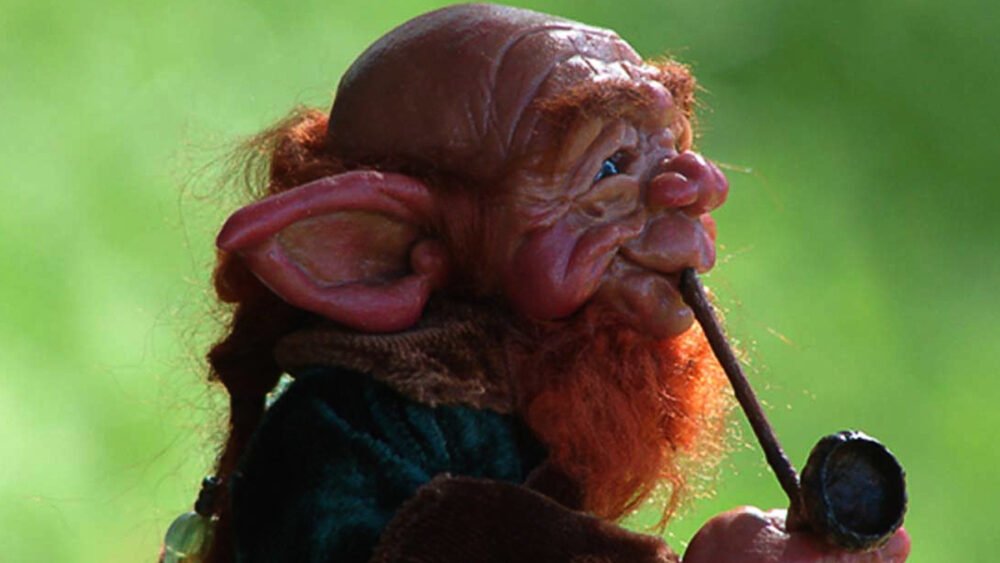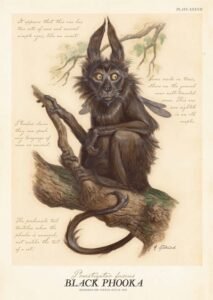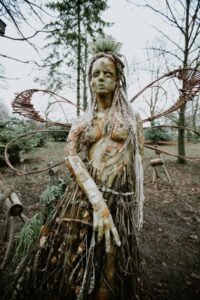5 Irish myths and legends

Ireland is a country that is known for its myths and legends. Storytelling has always been an important part of Irish culture and still is today, with many of these stories handed down through the generations. These stories are from a pre-Christian Ireland and with the arrival of Christianity, many were transcribed, preserving these tales. It is because of this that this literature is viewed as the most preserved and extensive of all the branches of Celtic mythology. With that, let’s take a look at 5 of the most popular stories within Irish myths and legends.
Fionn Mac Cumhail

Fionn Mac Cumhail nearly has superhero status within Irish myths as he paved the road to Scotland, fought monsters, and created entire islands! He had two hounds, Bran and Sceolan, who have their own unique story of how they came to be.
One of Fionn Mac Cumhail’s most popular exploits might be the story of the Giants Causeway in which he fights a giant. A Scottish Giant, Benadonner, is threatening Ireland, which enrages Fionn. To fight back he takes chunks of the Antrim coast and throws them into the sea to find him and teach him a lesson. This turns out to be a bad idea when Fionn sees the size of the giant. Fionn retreats but is followed by the giant and Fionn is only saved because of his quick thinking wife who disguises him as a baby. The angry Scottish giant sees the baby and decides if the child is that big his parents must be truly massive and leaves back to Scotland but not before tearing down the bridge between Ireland and Scotland, thus leaving what we now know as the Giant’s Causeway.
The Púca

You’ll often hear around Halloween ‘penny for the púca’- which refers to children dressed up going from door to door for sweets or coins or monkey nuts, referred to as ‘púca nuts’. This word comes from an old Irish myth that a lot of people might not know now.
The Púca is a creature that is said to bring both good and bad fortune. A púca can have either white or black fur or hair and is able to change shape. The story of the Púca is to cause as much mischief as possible. They often entice humans to take a ride on their back and give the rider a wild and terrifying journey before dropping them back to the place they were taken from. The Irish tales give the person advice on how to protect against a púca. It is said that the rider will be able to take control if they wear sharp spurs, to either deter the creature or to take control when on its back. This stems from the Irish belief that ‘cold iron’ has the ability to ward off the supernatural.
The Fairies – Fairy forts

One of the most common Irish myths has to be the fairies. Irish fairies are said to be the Tuatha de Danann, one of the first tribes to arrive in Ireland. They were magical and secretive people. They look similar to humans but live on a different plane to us and are able to conceal themselves. Fairies like to be left alone but love children so if you treat them well you might find a fairy fort near you. To find ways into their world you would have to find a fairy fort, which can still be found around Ireland today.
The fairy fort is an earthen dwelling – often called ring forts – that date back to ancient times. They have circular markings which are typically all that is left of the original site. There are hundreds of these types of sites around Ireland and are not to be messed with. It is believed that the areas contain magic and to interfere with it could lead to your death. Fairy forts vary dramatically with some being made of stone while others are just markings in the ground.
Cú Chulainn

Cú Chulainn is an Irish mythological demigod, who is believed to be a reincarnation of the Irish god Lugh, who is also his father. He was born Sétanta but gained the name Cú Chulainn when he slew Cualann’s fierce guard dog in self-defence when he was still a boy. When the dog attacked him, Sétanta hurled his sliotar down the hound’s throat and killed him. Cualann was upset at losing his hound so Sétanta said that he would take his place until they found another and from that day on got the name Cú Chulainn, which means hound of Cualann.
At the age of 17, he single-handedly defended Ulster against Medb of Connacht. It was prophesied that he would have everlasting fame but his life would be a short one. He is known for his battle frenzy that is referred to as ríatrad in which he becomes an unrecognisable monster who knows neither friend nor foe.
Leprechauns

It’s impossible to have a list of the top myths and legends in Ireland without mentioning leprechauns. These are probably the most well known outside of Ireland as part of the Irish culture. These diminutive supernatural beings are classed as some type of solitary fairy. They are usually depicted as small bearded men, wearing a green coat and hat, who partake in mischief. One of the most common stories is that they use rainbows to get around and a pot of gold can be found at the end of one. They are quick-witted, highly intelligent, and will do anything to avoid capture.
It is said to be difficult to catch a leprechaun but not impossible. If you are lucky enough to capture one he will grant you 3 wishes to be released but you have to be careful because making the wrong wish could result in a lifetime of bad luck. They usually live at the bottom of fairy trees and another commonplace they hide their gold is in fairy forts so that it will not be disturbed by humans.
These are just 5 of the most popular myths and legends of Ireland, there are many more that you can check out. Let me know what your favourite Irish myth or legend is!
More like this: